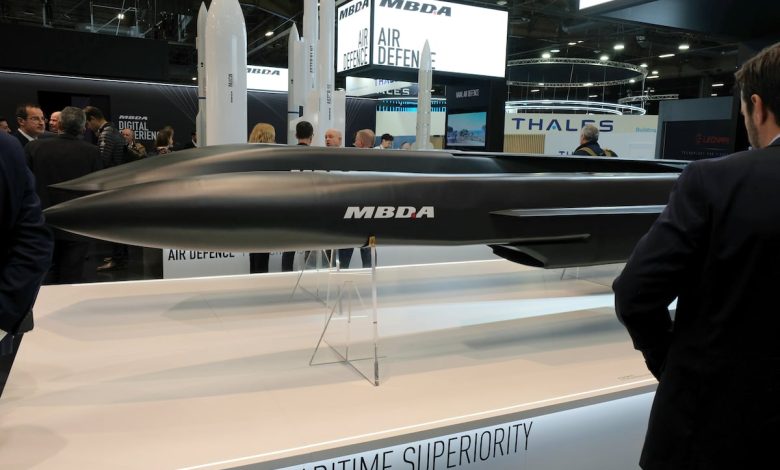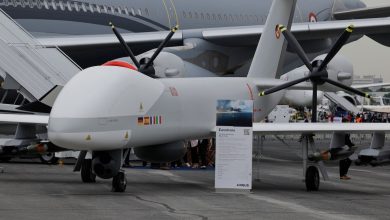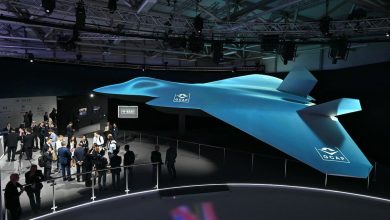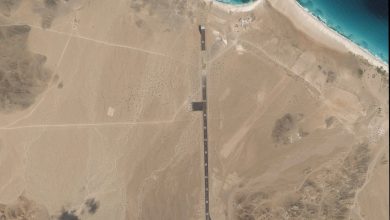MBDA pushes new deep-strike missile in time for Europe to arm up

PARIS — Pan-European missile maker MBDA is pursuing an “aggressive” development schedule for its future cruise and anti-ship missile program, with the assessment phase being finalized and plans to move the long-range strike weapon project known as FC/ASW into development next year.
MBDA is working on what it says are two complementary missiles as part of FC/ASW: a stealthy subsonic missile and another that travels at high supersonic speeds while remaining maneuverable. Italy will join the French-British project in 2025 for the development and manufacturing phases, the missile maker said in a briefing at the Euronaval conference on Wednesday.
The return of high-intensity conflict in Europe shows sovereign deep-strike capability is critical for the continent, while improved air defenses require a range of disruptive technologies to defeat them, according to MBDA – which also makes air-defense systems used by France, Italy, the U.K. and others.
“Given the strategic importance of deep strike, the FC/ASW project has been set a very aggressive schedule by launch partners France and the U.K.,” MBDA said in a statement on Wednesday.
MBDA has put more than 750 people across France and the U.K. on FC/ASW, making it the company’s biggest program ever, even before Italy’s contribution. The company said it has completed a number of tests across all critical elements of the FC/ASW missiles, describing the results as “highly impressive.”
Investment in the weapons program is continuing under the ongoing assessment-phase contract with MBDA, U.K. Minister for Defence Procurement and Industry Maria Eagle said in response to a parliamentary question in September.
The company says FC/ASW is the most technologically advanced missile deep-strike program currently in development. The three countries in the FC/ASW program will operate both missiles, which will be ship and air-launched, according to MBDA.
The firm has manufactured the first prototype of the ultra-low observable missile and performed “extensive” testing of the radio-frequency signature, and has also completed “exhausive” wind-tunnel testing of the ramjet propulsion system for the supersonic missile at the MBDA faciity in Bourges, France. The ramjet missile will operate at high supersonic speeds, but below Mach 5, company officials said.
Other testing completed includes advanced seekers, warheads and aerodynamics for both missiles. Missile design is about 80% fixed, with small modifications still possible, particularly with the arrival of Italy in the program, according to the briefing.
MBDA’s Italian business is strong on missile guidance, already providing that technology for the Aster air-defense missile, and will contribute expertise in that area to the FC/ASW program, the company said.
The attack missiles will have dual missions: ground strike, including suppression and destruction of enemy air defenses, and anti-ship warfare. The supersonic missile’s primary mission will be anti-ship, with an additional ground-attack capability, while the stealth missile’s will be focused on ground attack, with an additional anti-ship mission, particularly against docked vessels.
Within the current missile portfolio, the company has started marketing its Naval Cruise Missile for export, with Italy interested in integration of the weapon on an updated version of the multipurpose FREMM frigate. Italian officials said at Euronaval this week that the country’s new PPA multimission vessels will also get the strike missile.
The missile, comparable to Raytheon’s Tomahawk, has previously only been available for the French navy, where it’s known as the Missile de Croisière Naval or McDN, and equips France’s FREMM frigates and nuclear attack submarines.
The missile maker is also offering a ground-launched version of the naval missile, which was unveiled at the Eurosatory show earlier this year. The Land Cruise Missile would be truck-mounted and could be a short-term option for the European Long Range Strike Approach, whose partners include France, Italy, the U.K., Germany, Poland and Sweden, according to the company.
Countries inside Europe as well as outside have expressed interest in the LCM, according to company officials. The naval and land cruise missiles are both sovereign solutions that are “ITAR-free,” so not subject to restrictions under the U.S. International Traffic in Arms Regulations, according to the company.
MBDA presented a longer-range version of its submarine-launched Exocet anti-ship missile, aimed at providing subs from French shipbuilder Naval Group with a self-defense capability. The missile maker says it’s the only European player to provide a sovereign submarine capability, with no equivalent on the market.
Other novelties presented at Euronaval included an update of the TESEO anti-ship missile used by Italy, with double the effective range and featuring a new seeker combining active electronically scanned array and electro-optic technologies. The TESEO Mk2/E was successfully test fired by the Italian navy on Oct. 10, with the qualification phase expected next year, MBDA said.
Rudy Ruitenberg is a Europe correspondent for Defense News. He started his career at Bloomberg News and has experience reporting on technology, commodity markets and politics.
Read the full article here






